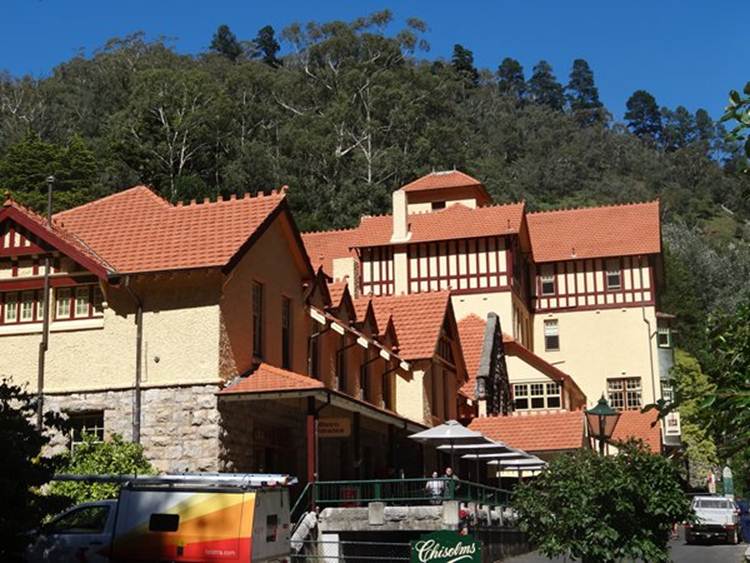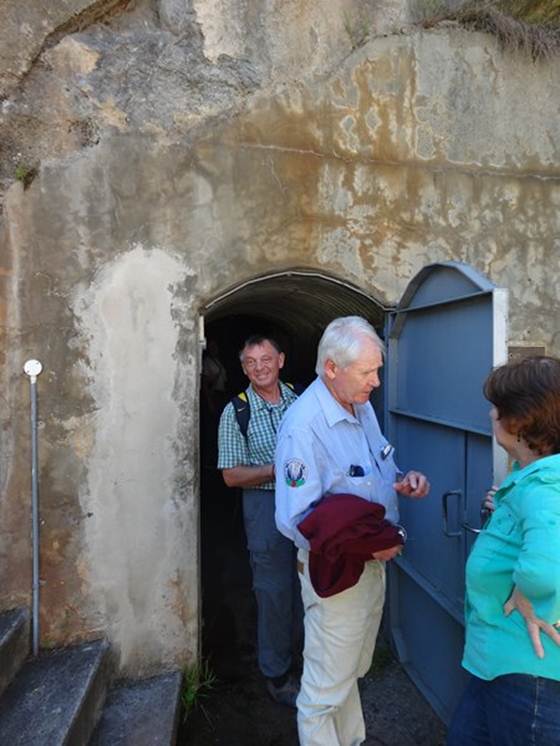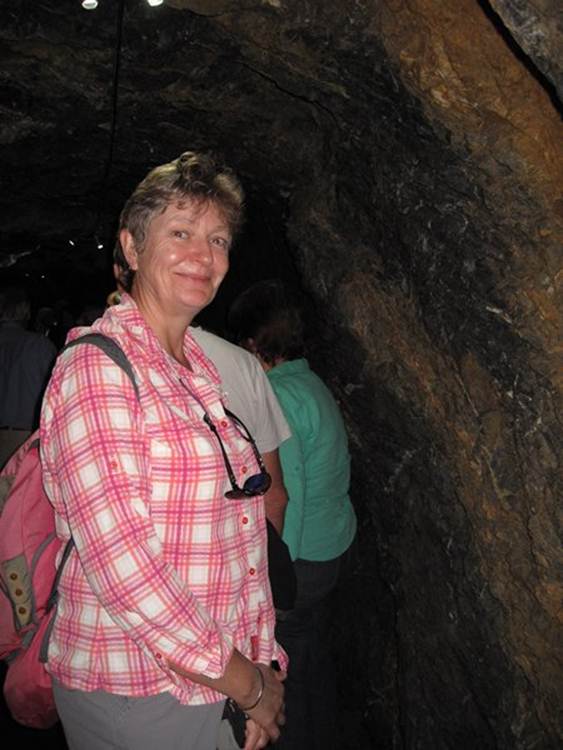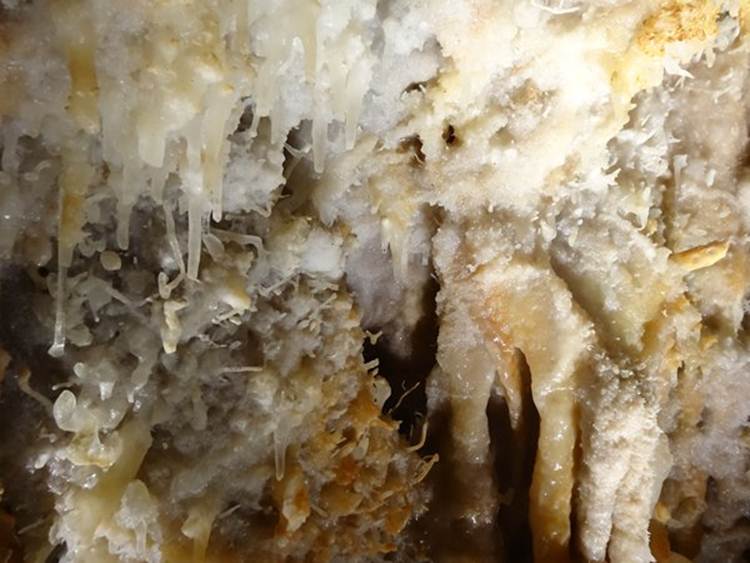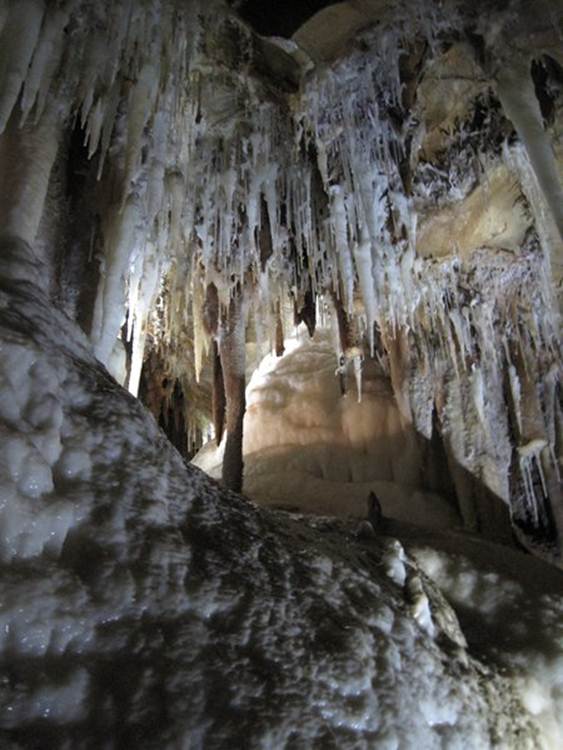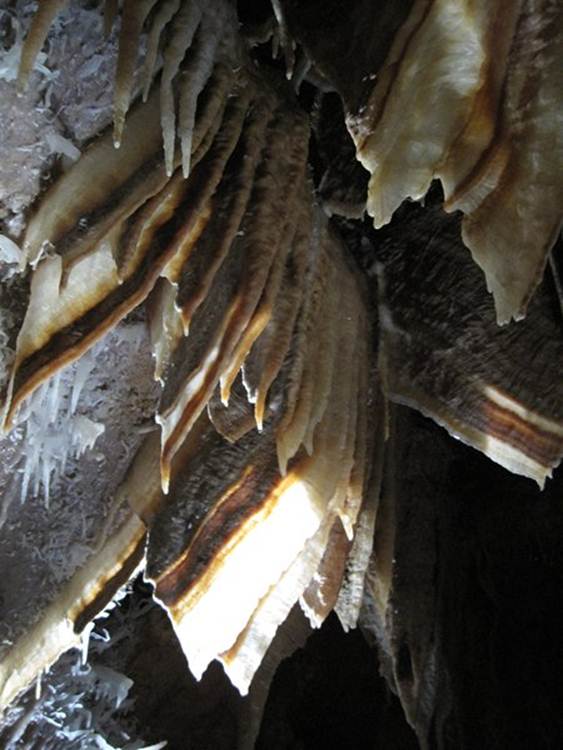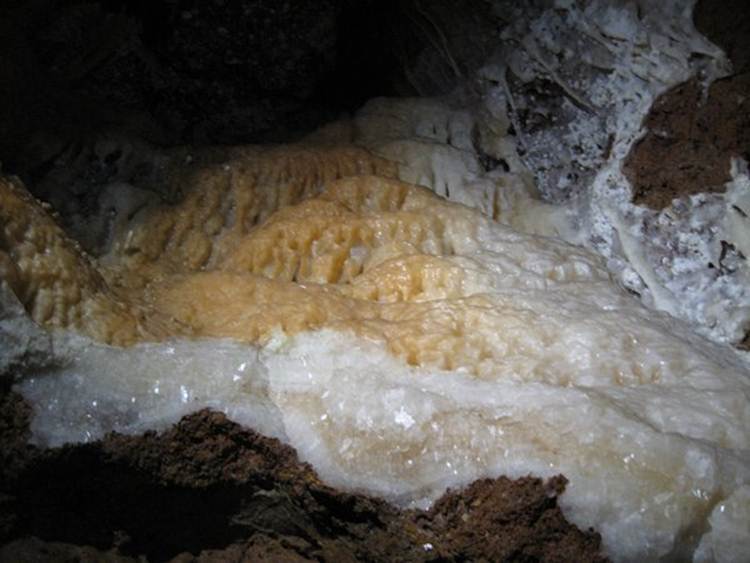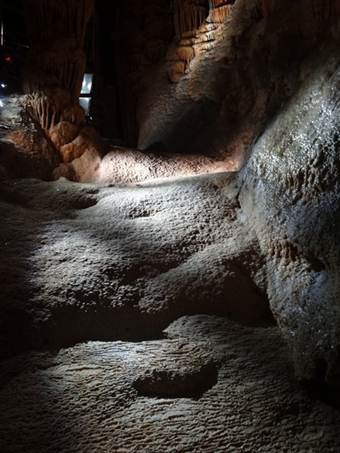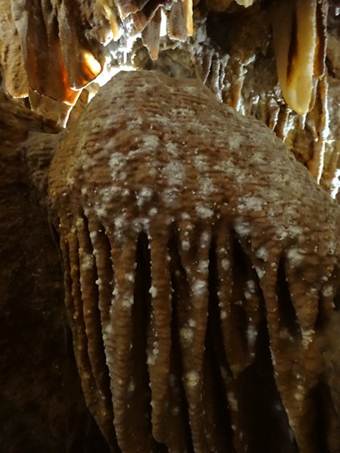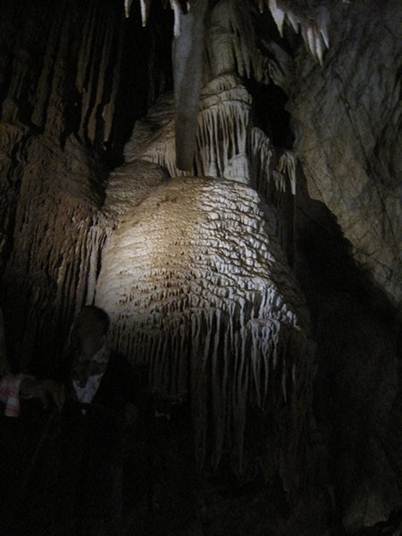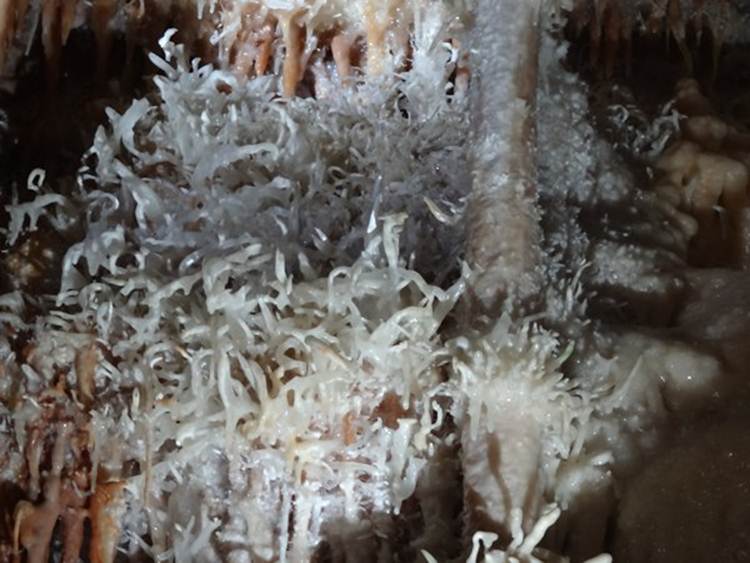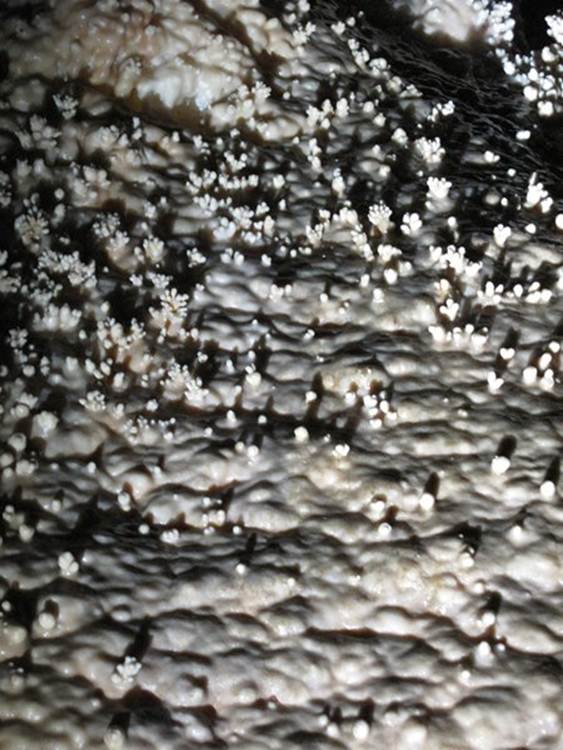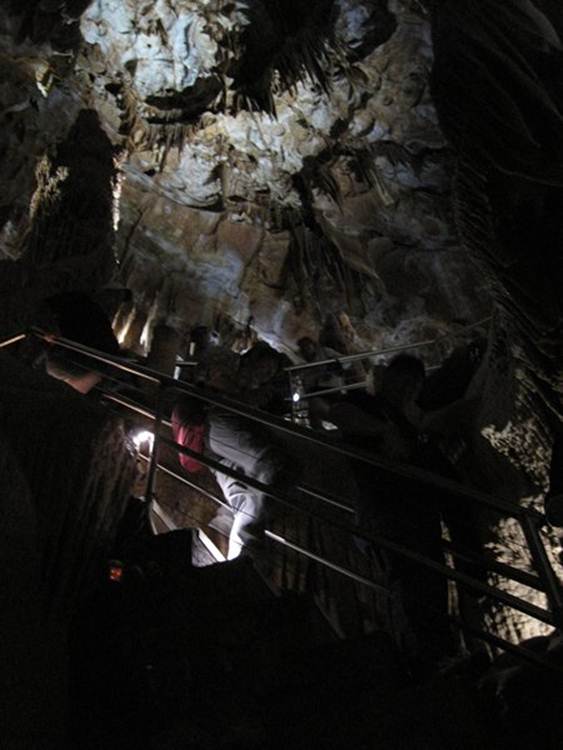Oberon - Jenolan Caves 1

Position 33 42 06S 149 51 28E Moved to Oberon, small town to the west of the Blue Mountains Region and close to the Kanangra-Boyd National Park. Came here so that we could also visit the Jenolan Caves, which are limestone. There are nine caves you can visit – and it costs anywhere between $30 - $40 per cave. There are others but they take too long to walk to and so are not considered viable. We did two of the caves: The River Cave – very strenuous walk and squeeze up and down steps, ladders and through narrow passage way – and Orient Cave, by far the best. Historic guesthouse at Jenolan caves. Looks like Europe to me. The accommodation ranges from posh to bush cabin.
Orient cave (which is a whole series of caves) wasn’t easily accessible until a couple of blocks were employed to blast a tunnel from the valley into Orient Cave. Now called Binoomea Cut, the tunnel is 400 ft. long. Paul at the entrance of Binoomea Cut and Rhu just inside the entrance. The lady in front of Rhu was claustrophobic, she stayed in the tunnel until first cave and then had to be escorted out.
The limestone (mostly calcite), was deposited underwater when the area once lay below a warm shallow sea. There are fossils in some of the sections and earth scientists recon the limestone is about 340 million years old. Running water has carved out lot of caves in this area, which contain a lot of deposited limestone formations (called speleothems - learnt another word) and lots of different shapes can be found here. Falling rain picks up atmospheric carbon dioxide. The water passes though the soil picking up more carbon dioxide and other material. Carbonic acid is formed and this dissolves the limestone rock. The solution slowly seeps through the rock until it reaches a cave, where the water droplets fall to the cave floor. The dissolved limestone or calcium carbonate is deposited again as crystal calcite. There are four types/groups of limestone formations: the dripstones, flowstones, pore deposits and pool deposits (things like oolites and dogtooth spar but we didn’t really see any of those). The dripstones include the straws, stalactites, stalagmites and columns. Straws look exactly like drinking straws, hollow in the middle. Water drips down inside the straw and deposits calcite in a ring at the bottom of the straw. Some can be several centimetres long.
We all know about stalactites – from the ceiling and stalagmites from the floor. Stalactites generally start off as straws but the small hole gets clogged up and water runs down the outside instead of the inside. The deposit thickens up – the guide said into a carrot – and then into stalactite. Stalagmites grow up from the cave floor from either drops off the cave roof or off stalactite above. The LHS and middle pictures are from River Cave, stalactites and stalagmite, respectively, the latter is called the minaret. Columns or pillars are where stalactites and stalagmites join together, so extend from floor to ceiling. The narrow waist is where the two have joined together. White is recent and the brown is stained calcite from a previous flooding of the chamber.
Flowstones form shawls and flowstones! Water reaching a cave roof doesn’t always form drops. It can trickle down or along the rock face, depositing a narrow strip of calcite, that eventually results in a thin sheet, growing at an angle from the wall called a shawl. You can get folds in them as the water runs from side to side along the cave wall. The brown bands are from iron oxide being washed out from the rock.
Flowstone – water running over the cave floor slowly deposits a layer of crystals across the entire floor. Sometimes the lower parts hang free making a fringe or shawl of stalactites. Normally these would sparkle in the light but because it has been raining so much a lot of water flowing over the surfaces.
Helictites and (cave) coral are types of pore deposits. Water slowly enters a cave through pores or small cracks in the rock. Helix is Greek for twist and that’s exactly what they do. They can grow in any direction. Current theory suggests that water seeps from a pore but so slowly that it doesn’t form a drop. The water evaporates leaving behind the calcite. A capillary tube slowly forms dragging in more solution creating the helictites. Because there is no drop, gravity has no effect so lots of different shapes can be formed. Whole range of shapes from thin curly ones to straight ones.
Cave corals also form the same way except there is no capillary tube formed so the crystal can grow over large areas. They are rough in texture. These look like cauliflower.
Rhu coming down one of the stairways inside Orient cave system.
|
